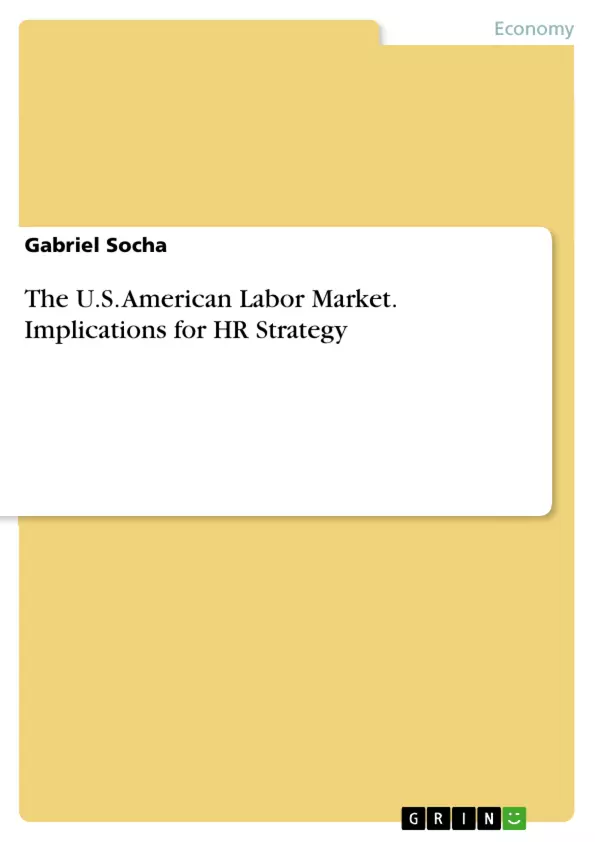First, the country is described and analyzed from a macro perspective using the PESTEL framework. Second, the analysis focuses on the domestic labor market. Here, facts and major shifts are explained, and current significant challenges are outlined. Through that, risks and opportunities are assessed, and a labor market outlook is given. Finally, implications for a human resource strategy are formulated, addressing the specific risks and opportunities of the American labor market.
The U.S. labor market has undergone major changes over the past decades. Besides globalization and other macroeconomic factors, demographic shifts, immigration, innovations in information technology and a decrease in unionization have been changing the American labor market in multiple ways. In the following, the most important shifts in the last decades are outlined and, additionally, an outlook with main challenges is given.
Inhaltsverzeichnis (Table of Contents)
- Methodology
- PESTEL Analysis of United States of America
- The U.S. labor market.
- Labor market shifts
- Implications for Human Resource Strategy.
Zielsetzung und Themenschwerpunkte (Objectives and Key Themes)
This paper analyzes the U.S. American labor market from a macro perspective, outlining key trends and challenges. The analysis uses the PESTEL framework to understand the country's political, economic, social, technological, environmental, and legal landscape. The paper then focuses on the domestic labor market, exploring significant shifts and challenges, ultimately formulating implications for human resource strategies.
- Impact of globalization and technological innovation on the U.S. labor market
- Demographic shifts and immigration trends
- Challenges and opportunities for HR strategies in the U.S. context
- The role of automation and offshoring in labor market transformation
- The changing landscape of education and skill requirements in the U.S.
Zusammenfassung der Kapitel (Chapter Summaries)
- Methodology: This chapter outlines the paper's methodology, which involves a PESTEL analysis of the U.S. followed by a focused examination of the domestic labor market. The chapter concludes with a discussion of the implications for human resource strategies.
- PESTEL Analysis of United States of America: This chapter provides a comprehensive overview of the U.S. from a macro perspective, analyzing political, economic, social, technological, environmental, and legal factors. The analysis highlights the country's strengths and challenges in each area.
- The U.S. labor market.: This chapter delves into the U.S. labor market, examining significant shifts in recent decades. The chapter explores the impact of globalization, technological innovation, demographic shifts, and immigration on the labor market. The chapter also discusses the changing nature of work and the growth of service-providing industries.
Schlüsselwörter (Keywords)
This paper focuses on the U.S. labor market, exploring key themes such as globalization, technological innovation, automation, offshoring, demographic shifts, immigration, and their implications for human resource strategies. The paper analyzes the PESTEL framework as a tool for understanding the macro-environment and its impact on the labor market. Key concepts include labor market shifts, workforce trends, and the changing landscape of education and skill requirements.
- Quote paper
- Gabriel Socha (Author), 2018, The U.S. American Labor Market. Implications for HR Strategy, Munich, GRIN Verlag, https://www.grin.com/document/541178



